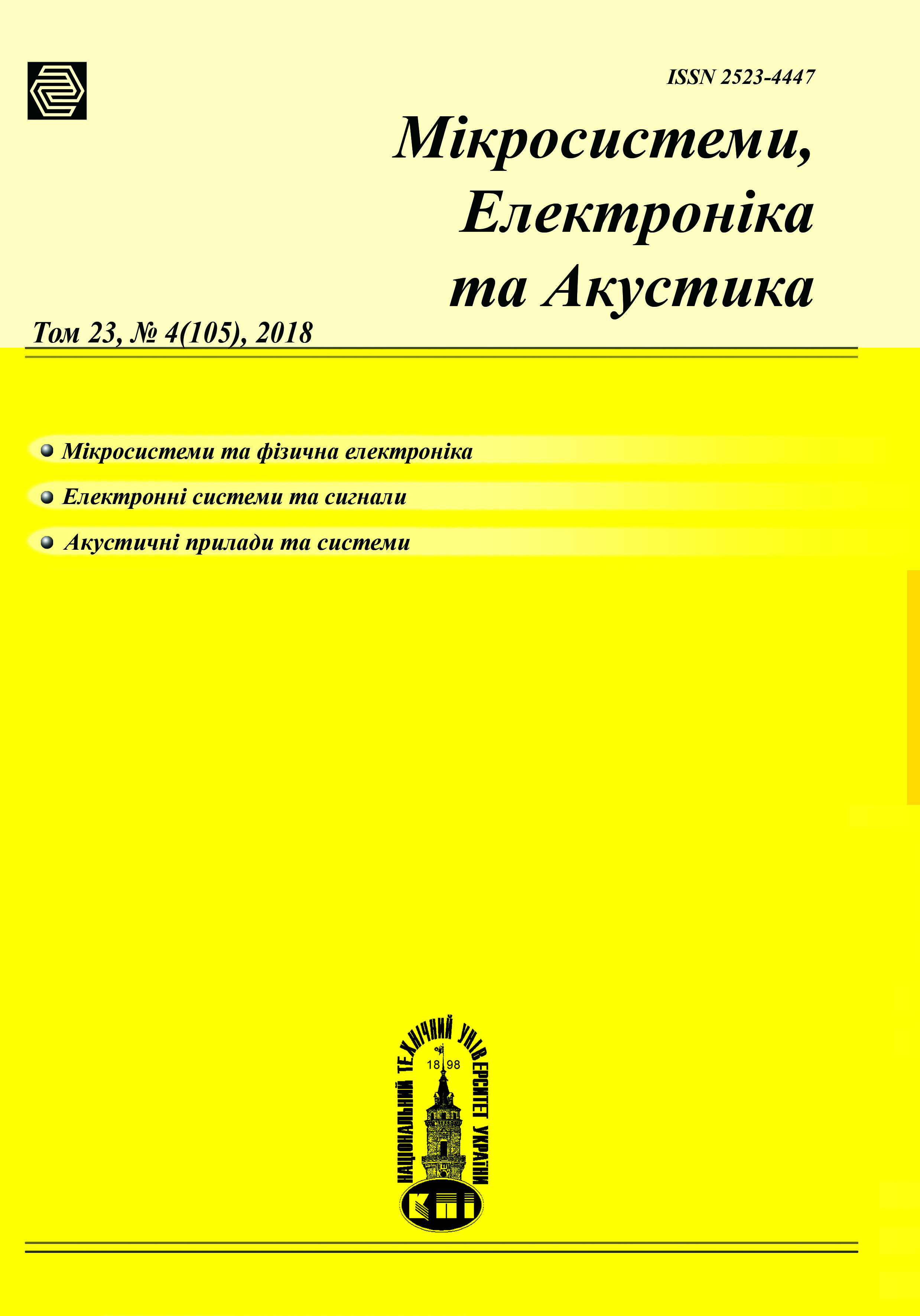Дослідження впливу заряду асиметричним струмом на ємність акумуляторних батарей
Основний зміст сторінки статті
Анотація
У статті наведено результати експериментального дослідження впливу заряду імпульсним асиметричним та постійним струмами на ємність акумуляторних батарей. Розроблено пристрій заряду та розряду для експериментальних досліджень щодо SLA (Sealed Lead Acid – герметизовані свинцево-кислотні) та Ni-Cd (нікель-кадмієві) акумуляторів. Під час експерименту визначено параметри напруги та струму. Виявлено, що зменшення ємності герметичних свинцево-кислотних акумуляторів відбувається майже в 2 рази повільніше, ніж за зарядом постійним струмом. Поглиблений аналіз впливу на акумулятори різних значень амплітуд та тривалості зарядних і розрядних імпульсів надає змогу подовжити строк експлуатації акумуляторних батарей.
Бібл. 15, рис. 4, фото 3.
Блок інформації про статтю

Ця робота ліцензується відповідно до Creative Commons Attribution 4.0 International License.
Автори, які публікуються у цьому журналі, погоджуються з наступними умовами:- Автори залишають за собою право на авторство своєї роботи та передають журналу право першої публікації цієї роботи на умовах ліцензії Creative Commons Attribution License, котра дозволяє іншим особам вільно розповсюджувати опубліковану роботу з обов'язковим посиланням на авторів оригінальної роботи та першу публікацію роботи у цьому журналі.
- Автори мають право укладати самостійні додаткові угоди щодо неексклюзивного розповсюдження роботи у тому вигляді, в якому вона була опублікована цим журналом (наприклад, розміщувати роботу в електронному сховищі установи або публікувати у складі монографії), за умови збереження посилання на першу публікацію роботи у цьому журналі.
- Політика журналу дозволяє і заохочує розміщення авторами в мережі Інтернет (наприклад, у сховищах установ або на особистих веб-сайтах) рукопису роботи, як до подання цього рукопису до редакції, так і під час його редакційного опрацювання, оскільки це сприяє виникненню продуктивної наукової дискусії та позитивно позначається на оперативності та динаміці цитування опублікованої роботи (див. The Effect of Open Access).
Посилання
I. M. SIndeev, “Yelektrosnabzhenie letatelnyh apparatov [Electric power supply of aircrafts]” M. Transport, 1982.
Podrazhanckiy Yirii Markovich, “Ispolzovanie impulsnyh rezhimov zariada dlia povyshenia yekspluatatsionnyh parametrov akkumuliatorov,[ Using pulse charging modes to improve battery performance]” Dis... kand.tehn. nauk, 2003.
V. S. Lavrus (red.)., “Batareiki i akkamuliatory: Dlia shirokogo krugaа Chitatelei,[ batteries and accumulators for wide cicle]” Nayka i tehnika, 1995.
V. Srinivasan, G. Q. Wang, and C. Y. Wang, “Mathematical Modeling of Current-Interrupt and Pulse Operation of Valve-Regulated Lead Acid Cells,” Electrochem. Soc. 2003 volume 150, issue 3, A316-A325. DOI: 10.1149/1.1541005
T. Nguyen and L. Bushnell, “Advanced Battery Charging Techniques: Pulse-Charging in Large-Scale Applications - Design of Divide and Conquer Technique for High-Capacity Batteries,” 2014.
E. C. Darcy, “INVESTIGATION OF THE RESPONSE OF NIMH CELLS TO BURP CHARGING by,” Diss. Present. to Fac. Dep. Chem. Eng. Univ. Houston, no. December, pp. 1–67, 1998.
T. O. Tereshchenko, V. M. Spivak, and V. B. Volkivskyi., “Prystriu dlia zariadu energoemnisnyh akumuliatornyh batarei asymetrychnym strumom [device for charging energy-consuming batteries with an asymmetric current]. Tehnichna elektrodynamika. Tematychnyi vypusk “Sylovaelektronika ta energoefektyvnist, p. 11–15, 2003.
V. M. Sivak and V. B. Volkivskyi, “Modeluvannia elektromagnitnyh protsesiv i prustroiu dlia zariadu energoemnyh akymuliatornyh batarei [Modeling of electromagnetic processes and a device for charging energy-efficient storage batteries]. Visnyk Natsionalnogo universytetu „Lvivska politehnika,” Elektroenergetychni ta elektromehanichni systemy, p. 165–172, 2003.
V. Ya. Zhuykov, T. O. Tеrеshchenkо, V. B. Volkivskyi, i Yu. S. Peterhеria, “Prystrii dlia zariadky akumuliatornoi batarei,[ Rechargeable battery chargers]” Deklaratsiiyni patent Ukrainu nа vunakhid № 57499 А, H02J7/00., 2002.
E. T. Volodarskii, B. N. Malinovskii, i Yi. M. Tuz, “Planirovanie i orhanizatsia izmeritelnogo eksperimenta,[ planning and organization of a measurement experiment]” K. Vyshcha shk, r. 280, 1987.
J. B. Wang and C. Y. Chuang, “A multiphase battery charger with pulse charging scheme,” IECON Proc. (Industrial Electron. Conf., vol. 2005, pp. 1
H. P. Smetankin., S. S. Matekin., A. V. Burdyihov., i T. V. Plokhоva., “Ispytaniia hermetychnykh nikel-kadmievykh akkumuliatornykh batarei na sokhranost emkosti pri dlitelnom khranenii posle zariada postoiannym i acymmetrychnym tokhami,[ Tests of hermetically sealed nickel-cadmium batteries for the preservation of the container during long-term storage after charging with a constant and asymmetric current]” Elektrokhimicheskaia Energetika, 2012.
H.-I. Hsieh, C.-Y. Tsai, and G.-C. Hsieh, “Photovoltaic Burp Charge System on Energy-Saving Configuration by Smart Charge Management,” IEEE Trans. Power Electron., vol. 29, no. 4, pp. 1777–1790, Apr. 2014.
V.A. Snegіrev, Pristrіy dlya doslіdzhennya vplyvu zaryadu asymetrychnym strumom na emnіst akumulyatornykh batarey: magіsterska dysertatcіya: 171 Elektronіka / Nacіonalnyi tekhnіchnyi un-t Ukrainy "Kyivskyi polіtekhnіchnyi іn-t іm. Іgorya Sіkorskogo". – K., 2018. – 90 ark. – Bіblіogr.: ark. 86-90, 2018.





